19 Types of Melons With Amazing, Juicy Flavors to Try
Author: Anne Cowart | Editor: Omar Alonso
Review & Research: Jen Worst & Chris Miller
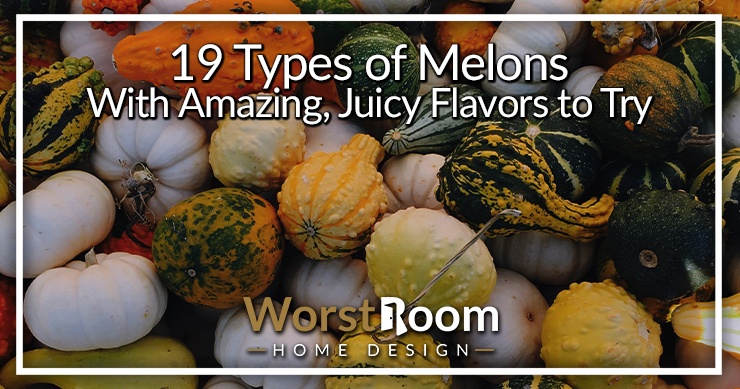
All types of melons are regarded as a valuable food source around the world, and cultivation began around 4,000 years ago. The delicious, juicy fruits are available in a wide range of colors and flavors.
Melons are a type of fruit that belongs to the Cucurbitaceae family. Typically, these plants grow on vines. Usually, they need support to grow, and the fruits are the most appealing parts of the plant.
There are about 900 different types of melons on the planet. Some are sweet, some are sour, while some can taste bitter as well. Have a look at our article and see how many melons you've had the pleasure of tasting or seeing.
19 Types of Melons
Melons are believed to originate in the hot climates of what we currently call Iran and India in gardens (having never been found in the wild!). Since then, cultivars have been grown in considerable numbers. We have listed many varieties of melons that are popular around the world to get you more than aquainted. Let’s get started.
Watermelon

Watermelon is a highly cultivated fruit that you can find almost anywhere around the world. Surprisingly, watermelon has more than 1000 varieties. We've shared about the most popular and interesting types of watermelon here.
Scientifically, it is called Citrullus lanatus, which is a member of the Cucurbitaceae family. And botanically, it is called a pepo. This is one type of berry with a hard rind and a fleshy mesocarp. The inner flesh is juicy and usually sweet.
Watermelon is a fun and easy way to get into backyard farming with a very delicious reward at the end. The next kinds of melons in our list is another great beginners option.
Cantaloupe

Cucumis melo var. cantalupensis is the scientific name of cantaloupe. The Australians call these melon types 'rockmelon', and the South Africans call it a 'spanspek'.
The many types of cantaloupe have two main varieties: One is European cantaloupe, and the other one is North American cantaloupe. These orange-fleshed melons grow mostly in India, Egypt, Iran, Turkey, and the US. It has a musky taste and a subtle sweetness to the flesh.
Honeydew Melon
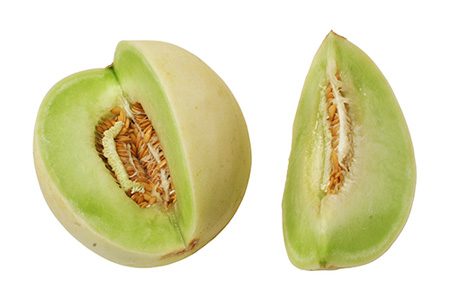
The scientific name of the honeydew melon is Cucumis melo L. (Inodorus Group) 'Honey Dew'. Among all the melon names, this one is the coolest. It is a round-shaped melon with a smooth rind and greenish flesh inside.
Like other types of melon fruit, it has seeds inside. Although it has "honey" in its name, this fruit is not overly sweet. The sugar profile is quite low here. A mature honeydew melon can weigh between 4 and 8 pounds.
Bailan Melon
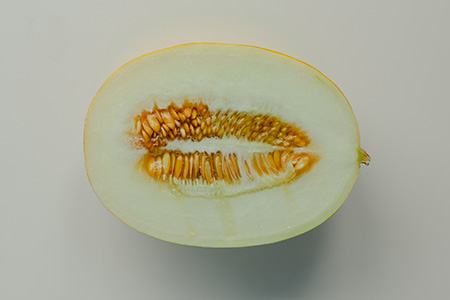
The Bailan melon is a close cousin of the honeydew melon. The fundamental difference between bailan and honeydew melon is their distinct, vivid yellow and orange colors.
Its flesh can be yellow, white, light green, or orange. Bailan melon has a concentrated sweetness. This melon is native to China. It also grows in France and Algeria.
Wintermelon (or Ash Gourd)
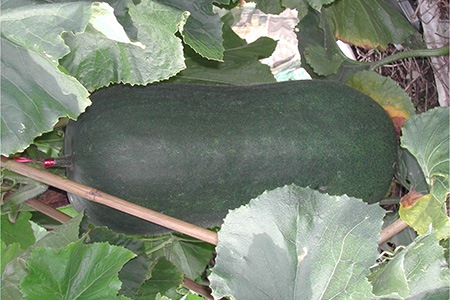
The winter melon has so many names, like the wax gourd, white gourd, ash gourd, etc. Scientifically, it is called Benincasa hispida.
These types of melons grow as a vine plant and is more of a vegetable than a fruit. The outer side has a greenish-waxy texture, and the inner part is white with loads of seeds in the core. It is native to Asia and is mostly grown in Southeast Asian countries.
Casaba Melon (or Golden Beauty)
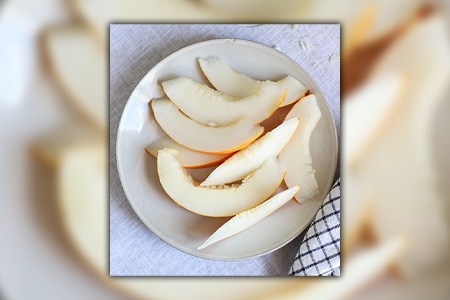
The scientific name of casaba melon is Cucumis melo var. Inodorus ‘Golden Casaba’. Casaba melon is one kind of muskmelon, to be precise.
This round fruit is usually yellow on the outer side and greenish white on the inside. Although it has a similar appearance to honeydew melon, the taste is completely different. It tastes more like cucumber, and the sweetness is mild.
Galia Melon
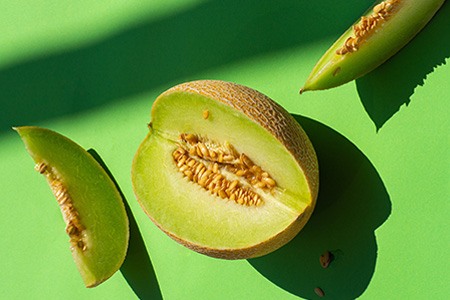
Galia melon is a cross between 'Ha-Ogen' and 'Krimka'. This F1 hybrid melon was developed in Israel. It doesn't weigh much like other melons. The most it can weigh is one kilogram.
When ripe, it spreads a sweet aroma and tastes sweet as well. As it is a hybrid melon, it is not a widely grown species. Although the cultivation is easy, it is now grown in different countries around the world.
Bitter Melon (or Pare Melon)
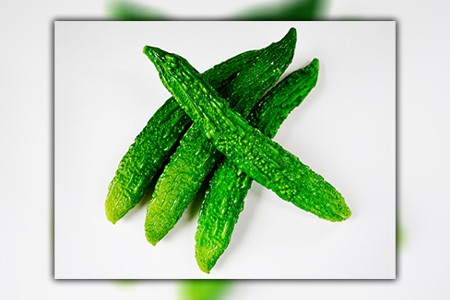
Scientifically, it is called Momordica charantia. People also call it "bitter gourd," "balsam pear," and "bitter squash", but they're all the same melon varieties. This one is a popular vegetable in the Asian region.
Although it is in the Cucurbitaceae family and is known as a melon, it doesn't taste anything like a melon. The bitterness of this fruit is the reason behind its name. It's also a great climbing vegetable if you're trying to grow some up a trellis or fence.
Banana Melon
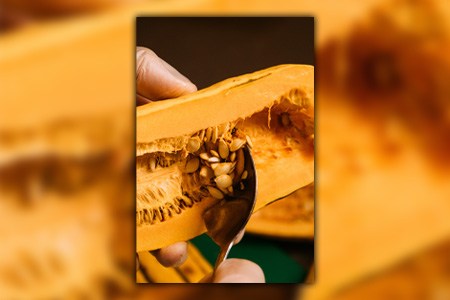
The banana melon is a rare heritage type from the United States. Not only does it have an elongated banana-like shape, but it also smells like one.
This is a different kind of muskmelon, which are varieties of melons. The skin is silky with a golden hue, and the flesh is orange with a hint of sweetness. It can weigh anything between five and eight pounds.
Banana melon types get their name from their distinct shape and yellow color. It has peach-orange colored flesh. The shape is elongated to the point where people have used them as rolling pin substitutes.
Santa Claus Melon (or Christmas Melon)
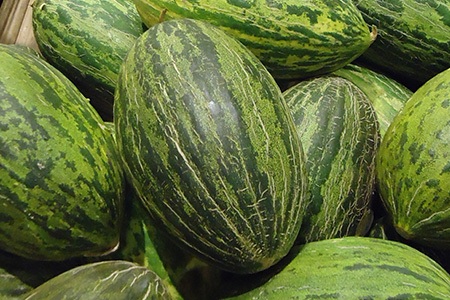
The Santa Claus melon, or Christmas melon, is a Spanish-originated species. The outer rind is thick and dark green, while the inner flesh of these types of melons is pale green to whitish.
It has got seeds in the core of the fruit. It can grow to one foot in length and six inches in width. Although it has a musky melony flavor to the flesh, it is not overly sweet. This melon is native to the northern hemisphere.
Crane Melon
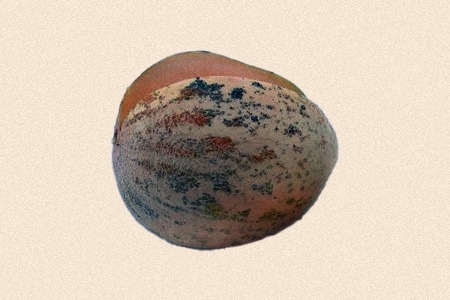
This variety was first developed in the 20th century somewhere in California. Oliver Crane was the developer of this species.
It has orange flesh with extreme sweetness in it. This juicy melon can grow to four to seven pounds.
Ambrosia Melon
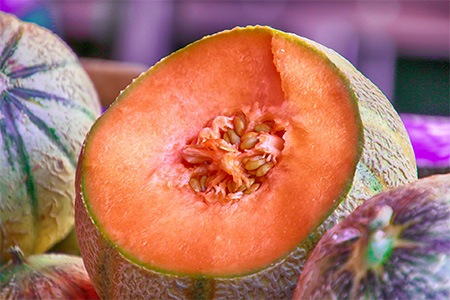
Cucumis melo "Ambrosia" is the scientific name of the ambrosia melon. The outer rind looks a lot like a cantaloupe, but both have distinctive differences. The flesh is pale orange and tastes very sweet.
These melon types are not among the largest melon species. The average diameter is 6 inches and can weigh up to 5 lbs. Ambrosia melon is native to western Asia.
Honey Globe Melon
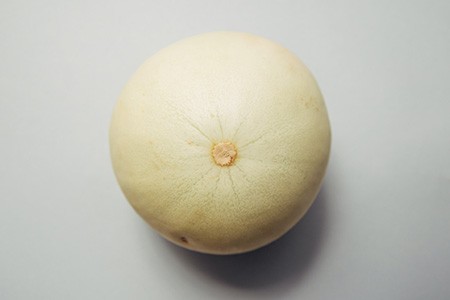
Honey globe melon has white skin on top and light green flesh inside. It is a crossbreed between the honeydew melon and the bailan melon.
That's why its characteristics are similar. The Honey globe melon also tastes like a hybrid of its parent melons. This unique melon originated in Persia. Western Europe and the United States cultivate honey globe melon as well.
Autumn Sweet Melon
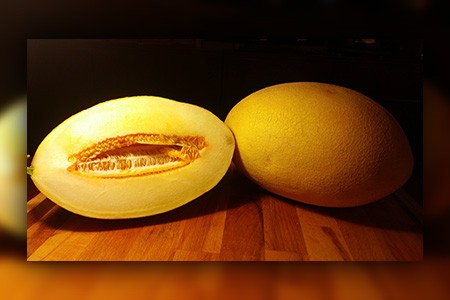
Autumn sweet melon, also known as Cucumis Melo. It gets its name as it ripens in the autumn season. The golden rind and white flesh are its distinguishing features. An autumn-sweet melon can weigh up to three pounds and over.
As far as the taste is concerned, this one is one of the sweeter melons. Autumn sweet melon needs semi-arid conditions to thrive. It grows well in the Middle East and Asia.
Armenian Cucumber
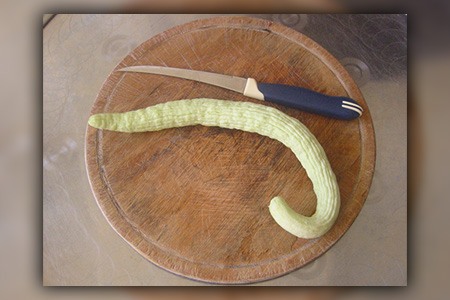
Cucumis Melo var. Flexuosus is the scientific name of the Armenian cucumber. Although Armenian cucumbers are in the melon family, it looks and tastes more like cucumbers. This one is usually eaten as a vegetable.
The growth of these melon species is surprisingly high. The fruit can grow up to three feet long. Armenian cucumbers are native to Egypt. Now it is also cultivated in the United States.
Gac Melon (or Gac Fruit)
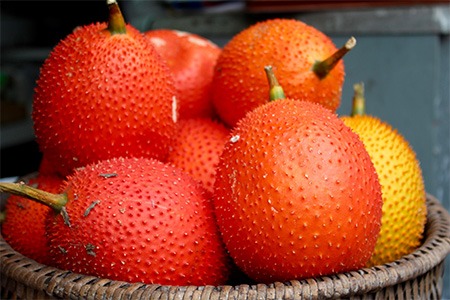
Gac melon, or Momordica cochinchinensis, has spiky orange-golden brown skin with beautiful pinkish-red flesh inside. Of all the melon names, this one is the most fun to say, I think.
These types of melons have a unique taste. It tastes like a cross between avocado and cantaloupe. This is not as sweet as other melons. Gac melon usually grows in Southeast Asia and the northern part of Australia.
Apollo Melon
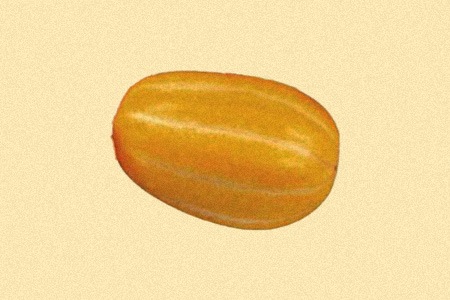
The Apollo melon has a webbed dark yellow skin. It looks very similar to the Golden Langkawi melon in appearance.
The flesh of the apollo melon is a white color with a brown line on top. It has a pleasant, creamy texture and a sweet flavor. This Melon is native to Malaysia and is one of the most different kinds of melons by taste.
Cucamelon (or Mouse Melon)
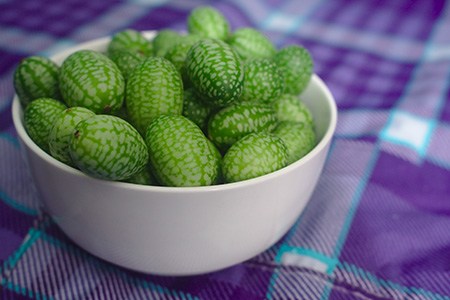
Cucamelon, or Melothria scabra, is also known as the mouse melon varieties. They are candy-sized fruits that look like a miniature watermelon. They have light green flesh and taste like sour cucumbers.
Cucamelon is native to Mexico and the Caribbean. These types of melon fruit now they grow abundantly in California and Florida as well.
Sprite Melon
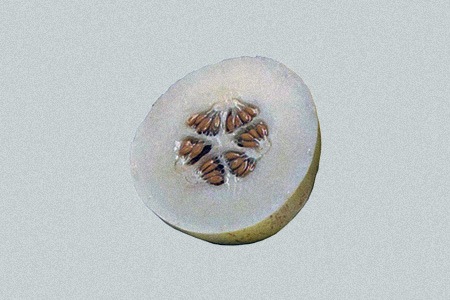
Sprite melon came from Japan. This type of melon doesn't grow too large. If you notice the outer rind, it has a yellowish to ivory sort of color. The ripe fruit has a soft, yellowish flesh inside. It is among the sweetest melons in the world.
The average weight of this round melon can be around 1.5 pounds. Although the sprite melon started its journey in Japan, now North Carolina is also cultivating this variety.
19 More Types of Melons
If the huge list above doesn't satiate you as a melon enthusiast then here's another quick list that you can use to continue your adventure:
- Caravelle Melon
- Horned Melon
- Vert Grimpant
- Yubari King Melon
- Ten Me Melon
- Canary Melon
- Crenshaw Melon
- Tiger / Tigger Melon
- Sugar Kiss Melon
- Jade Dew Melon
- Sky Rocket Melon
- Saticoy Melon
- Korean Melon
- New Century Melon
- Camouflage / Frog Skin Melon
- Hami Melon
- Snap Melon
- Charentais Melon
- Persian Melon
This list of melon names will keep you busy. An interesting note is regarding the Yubari King Melon, where in 2017 a pair of them sold at auction for $27,000 and again in 2019 for $45,000. Pretty silly if you ask me!
Types of Melons with a Wide Variety of Tastes
Melons are very fast-growing and need minimal attention while growing. Many people grow melons commercially, but you can also grow them in your backyard or balcony as it doesn't take too much effort.
Interestingly, the experimental shapes and hybrids are also catching everyone's attention because of their uniqueness.
We can't think of summer without thinking of melons because of their earthy, fresh flavor. Not only is the fruit refreshing, but the fruit juice also relieves tiredness with each sip. So, which of the different types of melons are your favorites?




